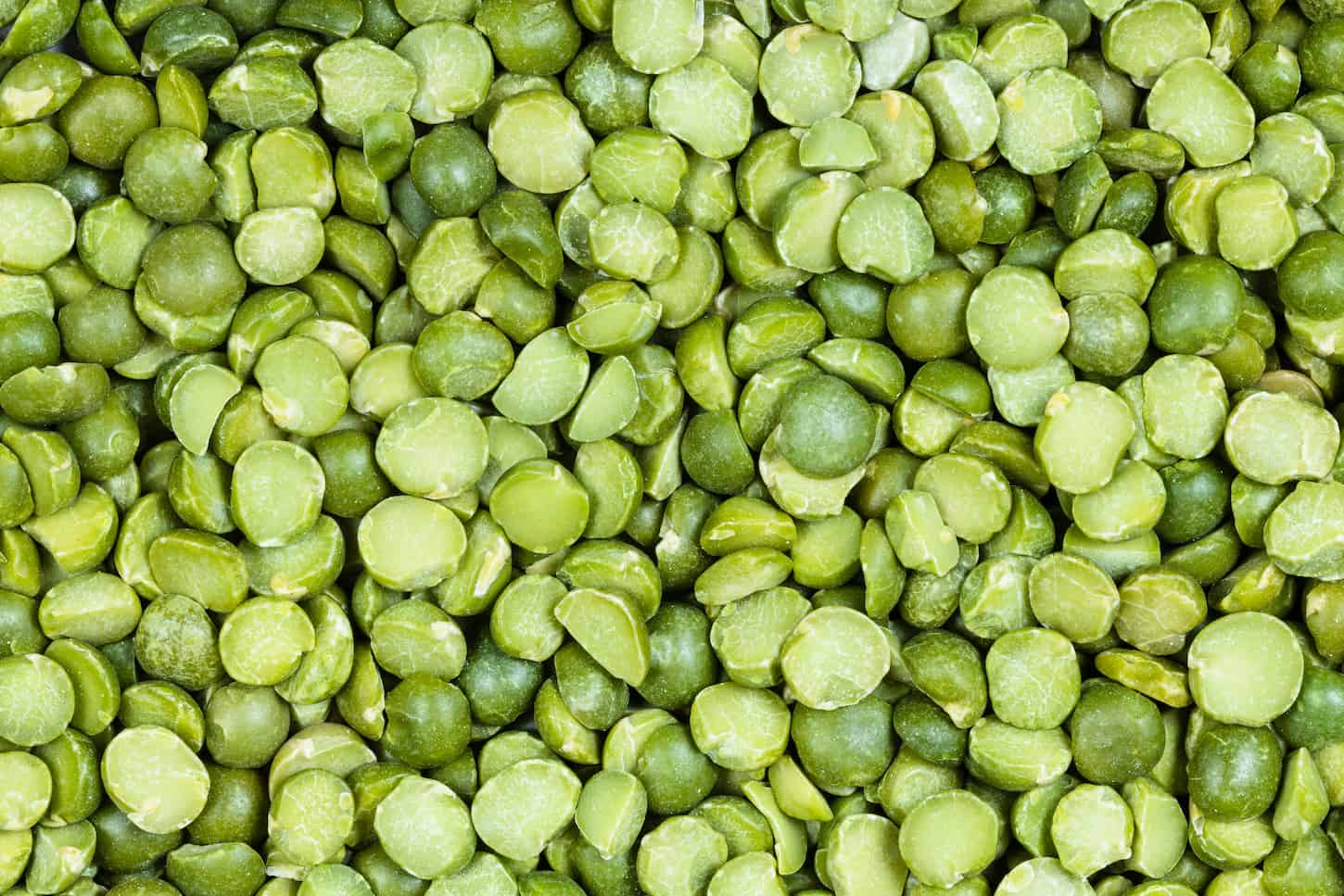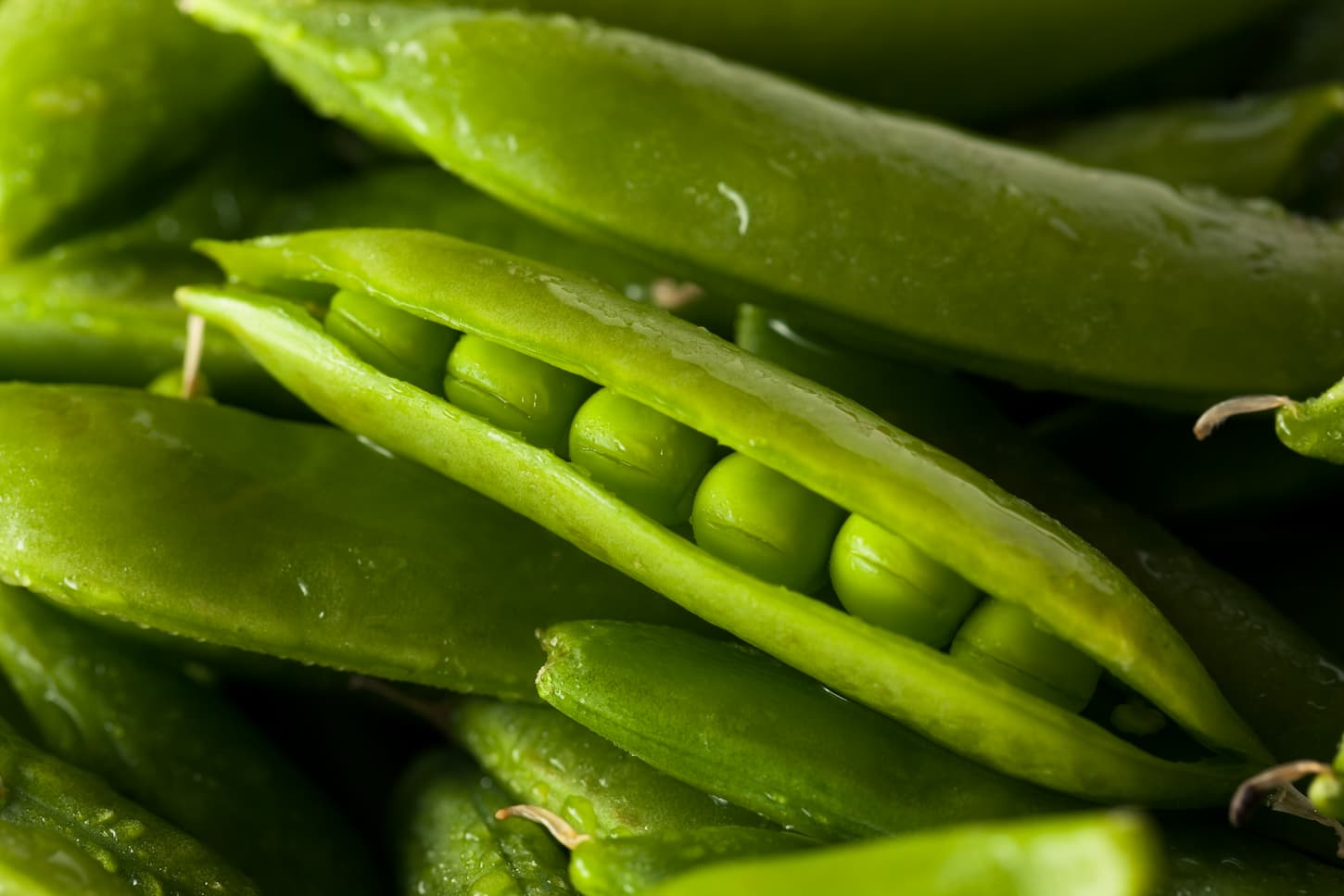Mangetout peas are trendy because they can be eaten raw (although they taste better cooked). In addition, they’re known for being entirely edible. But, some people may wonder – are all peas mangetout?
Not all peas are mangetout or entirely edible (including the shell). Mangetout peas include sugar peas and snow peas. Some peas, such as the English and field peas, are not wholly edible. They must be cleaned and shelled before eating.
However, there’s so much more to peas in terms of growing, nutritional value, and means of preparation. Read on to learn all the ins and outs of peas and what’s the best way to eat them!

What Does Mangetout Mean?
Mangetout comes from the French ‘pois mange-tout’, meaning ‘eat-all pea.’ This means the pea is completely edible, as these peas lack the hard shell (or membrane) other peas tend to have.
Are All Peas Mangetout?
Not all peas are mangetout. There are three most essential pea varieties (with probably thousands of species of peas); sugar and snow peas (mangetout peas), garden peas, and field peas.
Garden peas are usually what you think of, as they’re what canned peas are, but they’re also sold as fresh vegetables. Field peas are usually sold as livestock food, though people can eat them. They aren’t as yummy as snap, snow, or garden peas if you ask me.
Are snow peas the same as mangetout?
Snow peas are a type of mangetout pea. They’re eaten whole, including the pod. The edible pod is their defining characteristic, as most other peas contain indigestible fiber. Snow pea pods are thinner than snap peas.
Because they’re a hardy plant, snow peas can be cultivated during cooler times, which includes the winter and early spring.
Are snap peas mangetout?
Snap peas are mangetout, but they’re different from snow peas. The walls of the pod are thick, and people eat them raw. However, they’re often prepared as part of a salad or steamed.
Because they fall apart when overcooked, many prefer eating snap peas without cooking them. Personally, I love them dipped in some hummus.
Which Peas Can Be Eaten Raw?
Sugar and snow peas (mangetout) are peas that can be eaten raw. Garden and field peas need to be processed before eating.
Snow Peas
Since the pod walls are fragile, we can eat snow pods without cooking or preparation.
Sugar Snap Peas
Just like snow peas, no preparation is needed with snap peas. They’re often found in salads, or we can eat them individually.

What Is Mangetout Called in America?
Most people recognize the word mangetout as the name for raw-edible peas, even though it’s a borrowed word. The two varieties of raw-edible peas, snow and snap peas, are known as ‘sugar peas.’ Everyone will recognize them by that name.
About Mangetout Peas
These peas can grow in fertile soil with plenty of sunlight. They’re usually sown in spring, but since peas are hardy plants, they can be grown throughout the year (if we can protect them from harsh winter and/or summer conditions, depending on where you live).
When it comes to harvesting, snow peas are harvested in spring conditions before they’re fully grown since they develop after being harvested. Sugar snap peas, on the other hand, must develop fully before being harvested.
They’re susceptible to insects and diseases but no more than other legume species (source).
Differences between snow peas and sugar snap peas
As the name suggests, sugar snap peas are noticeably sweeter than snow peas. This isn’t the only difference, though, as sugar snap peas are a much younger variety than snow peas. They’ve only been cultivated since the second half of the twentieth century.
Aside from these minor differences, sugar and snow peas are generally seen as similar and interchangeable in cooking.
Similarities between snow peas and sugar snap peas
Aside from both varieties being edible raw, we must highlight a few more similarities.
The most obvious similarity is the nutritional one – both varieties offer the same amount. A 100-gram serving contains 42 calories, with 7.5 grams of carbs, but some proteins are there too.
Since these peas are so low in carbs, they’re a great diet food (and are naturally low in sodium as long as you aren’t pouring it on them yourself).
Additionally, a 100-gram serving of either of these peas provides us with the daily value of vitamin C, 30% of the daily value of vitamin K, and 22% of the daily value of vitamin A. Overall, this makes the pea a very healthy food choice.
Both varieties have a fiber string we must remove before eating the peas.
What About Non-Mangetout Peas?
The two varieties of peas that are not mangetout (that can’t be eaten raw) are garden and field peas. These are often cooked, and garden peas are often found in cans.
Let’s go into both of these varieties in more depth.
Garden peas
Also known as English peas, these peas have too much fiber for us to digest without cooking them first. Therefore, we must shell them before cooking, which is done by pulling the string and opening it up to extract the peas.
The most significant nutritional difference between garden peas and mangetout peas is the much higher amounts of vitamins A and B, which aren’t nearly as high in mangetout peas (source).
Although some people claim that they can be eaten raw – garden peas taste best after they’ve been cooked. They are most often sold as canned or frozen products.
Field peas
These peas are very popular, including black eye peas, crowder, and creamer. This type of pea has been cultivated for more than 7,000 years. Today, the biggest producer of these peas is the United States, Canada, some European countries, and Australia.
Since field peas contain protein in very high quantities (up to 25%), high levels of carbs, and low levels of fiber – they’re great livestock feed (source), for which they are quite often used.

A Short History of Peas
The oldest discovery of peas is older than 4000 BC. They were found in modern-day Greece, Syria, and Turkey. Many were located in Egypt as well.
Peas became popular quickly because they were easy to grow and didn’t need much preparation. Some people dried them and ate them. During times of great famine, peas were often the only food people could eat.
Modern peas mentioned in this article (field, garden, and mangetout) are very young in the world of peas – only introduced in the 17th century.
Today, the greatest pea producers are China, India, the USA, France, and Egypt. The largest part of peas produced in Australia is used as livestock feed.
Next Steps
Now that you know more about which peas are wholly edible read our complete guide to peas right here: Complete Guide to Peas: Best to Grow, Sweetest, FAQs. That way, you’ll know exactly which variety to plant, how to plant it, and how to care for it year-round.
Resources
Learning from your own experience is essential, but learning from others is also intelligent. These are the sources used in this article and our research to be more informed as homesteaders.
- Cantwell, M., and M. Saltveit. “TOLERANCE OF SUGAR SNAP PEAS TO MODIFIED ATMOSPHERES WITH HIGH CONCENTRATIONS OF CARBON DIOXIDE.” Acta Horticulturae, no. 1071, 2015, pp. 619–25. Crossref, https://doi.org/10.17660/actahortic.2015.1071.81.
- NDSU Agriculture and Extension, 17 Dec. 2021, www.ndsu.edu/agriculture/ag-hub/publications/field-pea-production.
- Stall, William M. “Weed Control in Beans and Peas (Bush, Pole, Lima Beans, English Peas, and Southern Peas).” EDIS, vol. 2010, no. 2, 2010. Crossref, https://doi.org/10.32473/edis-wg025-2010.
